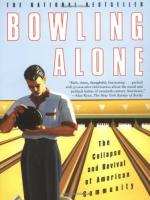
|
| Name: _________________________ | Period: ___________________ |
This test consists of 15 multiple choice questions and 5 short answer questions.
Multiple Choice Questions
1. In 1997, what percent of college freshmen indicated no religious preference?
(a) 37.
(b) 14.
(c) 28.
(d) 9.
2. In Chapter 5, what percent of corporate executives said that they encourage their employees to become involved in community service?
(a) 92.
(b) 64.
(c) 77.
(d) 84.
3. How many years did the Charity League of Dallas meet every Friday morning?
(a) 57.
(b) 62.
(c) 39.
(d) 46.
4. What crop needed to be harvested in the quote at the beginning of Chapter 8?
(a) Soybeans.
(b) Hay.
(c) Corn.
(d) Wheat.
5. Between the 1970s and 1990s, by what percent did church attendance fall among people under sixty?
(a) 10-20.
(b) 30-35.
(c) 5-10.
(d) 25-30.
6. During the last three hundred years, what percent of the American population has probably participated in congregations with some regularity?
(a) 15-30 percent.
(b) 20-40 percent.
(c) 35-50 percent.
(d) 10-15 percent.
7. In the 1990s, how many women worked outside the home?
(a) 2 out of 3.
(b) 1 out of 2.
(c) 3 out of 4.
(d) 4 out of 5.
8. How long had an informal literary group in Fayetteville, Arkansas, met twice a month?
(a) Since 1946.
(b) Since 1926.
(c) Since 1934.
(d) Since 1918.
9. By November, 1998, how many members attended a heated contest for the president of the Roanoke, Virginia Chapter of the NAACP?
(a) 48.
(b) 57.
(c) 62.
(d) 33.
10. By what year did it become a struggle for VFW Post 2378 in Berwyn, Illinois, to pay taxes on the post hall?
(a) 1987.
(b) 1968.
(c) 1999.
(d) 1974.
11. In 1960, how many voting-age Americans went to the polls to choose between Kennedy and Nixon?
(a) 62.8 percent.
(b) 72.6 percent.
(c) 59.1 percent.
(d) 48.3 percent.
12. How many Americans moved each year according to Putnam?
(a) 4 out of 5.
(b) 1 in 5.
(c) 1 in 4.
(d) 2 out of 3.
13. In 1998, how many American adults graduated from high school?
(a) 82 percent.
(b) 79 percent.
(c) 67 percent.
(d) 93 percent.
14. In 1996, how many Americans voted in the election between Clinton, Dole, and Perot?
(a) 48.9 percent.
(b) 36.9 percent.
(c) 23.8 percent.
(d) 51.3 percent.
15. Where was the bridge club located that Putnam mentioned in Chapter 1?
(a) Glenn Valley, Pennsylvania.
(b) Hastings, Michigan.
(c) Thornton, Colorado.
(d) Marshalltown, Iowa.
Short Answer Questions
1. In 1998, how many American adults had college degrees?
2. How many members belonged to the American Medical Association in 1995?
3. In the 1950s, how many Americans changed residence each year?
4. Who said "80 percent of life is simply showing up"?
5. In Gallup Polls in the 1990s, how many workers said they enjoyed work hours more than hours when they were not at work?
|
This section contains 349 words (approx. 2 pages at 300 words per page) |

|




